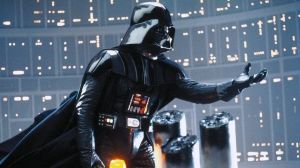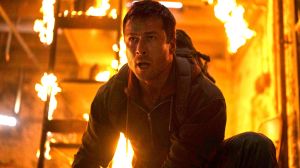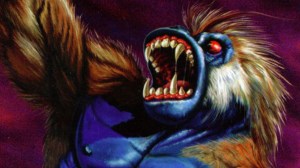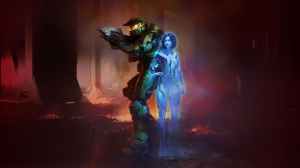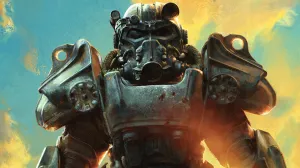So you may not have heard, but NBC’s Chuck ended on Friday. It was a show that did a lot of things right, treated its fans with respect and even had a pretty decent comic book tie-in once upon a time. So while the folks who made it their day-to-day lives for the last five years begin to drift their separate ways, we fans have been pretty nostalgic about the whole experience.It’s an experience that comics fans are used to–their ongoing, periodical entertainment that feels like it should just always continue and always be there, suddenly isn’t. Most of the time, it’s abrupt and leaves a lot of threads hanging. This is the category into which you can slip series like Dan Slott’s incredible run on The Thing and Dave Curtis Johnson and J.H. Williams III’s inimitable Chase. Those books were just too good to live long, and everyone knew it more or less from the word go. These books are arguably more like Twin Peaks than Chuck, to the extent that anything can be said to be “like” Twin Peaks.Sometimes–as with Chuck–it’s at the end of a respectable run during which the writers got to deal with most of their issues and draw things to a close but the title left on such a high note that it leaves the readers wanting more and wishing that the rest of the market had just supported their book a little bit better. Like, for example…Hourman, by Tom Peyer and Rags MoralesJust about every crossover has titles that spin out of it, and most of them are gone pretty fast and mourned by no one. That makes this title (as well as one more further on down the list) something of a departure from the norm in that it spun out of Grant Morrison’s DC One Million event (who would know that Morrison and Morales would work together again on reinventing Superman a decade or so later?) and turned out to be one of the best comics on the stands at the time.Following the adventures of the “Android Hourman” from the 853rd Century and former Justice League of America “mascot” Snapper Carr, the book was everything that a Red Tornado comic should be but never truly reaches, in terms of exploring the idea of a robot with a soul. It also had a great supporting cast and an ever-escalating series of strange plot events that helped it transcend the challenge of having few real villains.The title lasted for 25 issues–which seemed to be DC’s magic number for cancellation of on-the-bubble titles in the days when circulation was high enough that the publishers weren’t breaking the bank giving low-performers a shot–but has lived on in the hearts of fans ever since.X-Statix, by Peter Milligan and Mike AllredFor just over two years, the artistic genius behind Madman was given free reign over an X-title. Really just let that sink in. This isn’t like giving Superman to Grant Morrison, who has some crazy ideas but has consistently and successfully shown his ability to be a company man and write stories that–like those of Geoff Johns or Brad Meltzer–are really thinly-veiled paeans to the Silver Age. This is something different.This version of the book reimagined X-Force completely before giving it a new name, with a group of unknown mutants acting as reality-show superheroes. Think of what Dan Jurgens hinted at with the first volume of Booster Gold back in the ’80s, or what many have tried and failed to do with the New Mutants over the years. All of that told with Milligan’s Vertigo-style humor (the entire team gets slaughtered and replaced in the first issue) and Allred’s beautiful and bizarre art.X-Statix has been off the shelves since 2004, but Marvel did just recently release an omnibus hardcover collecting the entire run. It’s worth checking out.H-E-R-O, by Will Pfeifer and KanoA spin on the soon-to-be-respun Dial H for Hero concept, Pfeifer took the H-dial out of the hands of a single, heroic individual and handed it off to a parade of seemingly random folks who all dealt with having powers in a slightly different way.It was a fun, clever and often heartbreaking book that started out with one of the most poignant and unexpected first issues I can remember in superhero comics. As the series wore on and began to tie into the history of the property, it lagged somewhat but there were still moments of true brilliance in there and it’s hard not to imagine that reconnecting Robby with the H-Dial and bringing all of the “heroes” together was something done mostly to bring down the curtain on the series, and not because Pfeifer was looking to create a superteam out of it.So far only the first arc (arguably Pfeifer and Kano’s best work) is available in collected editions, but it wouldn’ t be surprising to see this hit in the first half of 2013 if the remake takes off. It worked for Resurrection Man.The Incredible Hercules by Greg Pak, Fred Van Lente and FriendsIt’s hard to believe that it’s been a year since this book went off the shelves. While Pak’s Incredible Hulk run was a huge critical success and full of a lot of surprises and great stories, nothing quite topped The Incredible Hercules for many fans. With a tone that felt like Peter David’s Young Justice or Dan Slott’s The Thing, Herc pounded and boasted his way across the Marvel Universe in inimitable Herc fashion, along with his buddy Amadeus Cho, who still hasn’t been used as well since the series ended.Batgirl by Bryan Q. Miller and FriendsAlong with Gail Simone’s Secret Six and Dan Jurgens’s Booster Gold, there are many fans who would argue that DC canceled three of its five best books when The New 52 ended–but none of these seemed more egregious than the loss of Bryan Q. Miller’s Batgirl, which started out good but was constantly improving and seemed to be really just hitting its stride when the announcement came that the New 52 would wipe the book out and replace Stephanie with Barbara Gordon, the original Batgirl who would no longer be confined to a wheelchair.In spite of a terrific final issue (one of the best of August’s finales, along with James Robinson’s Justice League of America and Peter Tomasi’s Green Lantern: Emerald Warriors) that did a lot of heavy lifting in terms of wrapping up and giving fans a reason to crack a final smile, the title’s fanbase has largely not been appeased and in spite of Barbara’s new book being a best-seller for DC there’s a small but vocal group of Internet fans who won’t be happy until Stephanie’s got her own series again.Captain Marvel by Peter David and FriendsDavid rarely takes his books as seriously as most other writers, and that’s often a good thing–but that doesn’t mean he can’t bring some serious conflict and consequences to his stories and characters. Imagine a somewhat less esoteric version of the Giffen/DeMatteis Justice League and you’ve got a good idea of the neigborhood in which much of David’s best work resides.His run on Captain Marvel was no exception, and managed to succeed where so many Marvel writers had failed: in tackling the cosmic. The miracles done in recent years by Dan Abnett and Andy Lanning may have made some fans forgetful of the fact, but Marvel has historically had a very spotty history with sci-fi characters, and Captain Marvel himself was at his best in the Silver Age when he was being humanized and made less alien. David went the other way, giving his hero spectacular powers and not always the responsibility to handle them properly. The result was a wonderfully original take on one of Marvel’s franchises that hasn’t been equaled since.


